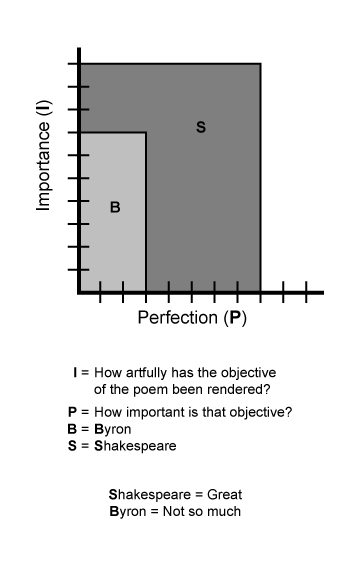
Unfortunately, too many English and liberal arts majors throw their hands up and say, “I can’t do math.” Idiots. First, you can do math. Second, that just gives license to all of the STEM kids to dismiss your teaching of poetry in a “why do we need to know this” way. Don’t go there.
Let me be brief.
First, data should drive instruction. If we believe in a growth mindset, data should be used to measure a baseline and then measure progress (if you don’t believe in a growth mindset, please get out of education). What you do in the classroom should have an impact on student learning. That’s what we are paid for.
When our school board planned to change how literacy intervention was delivered, I was asked to help craft a slide presentation defending how it had been done. When I asked for data–some measure that the program worked–I was told there was none. Instead, I was asked “How can you measure a child’s love of reading?” by one of the instructors. Well, you can measure how many books they read independently, how much time they spend reading each week, or even how they rate the books they read. None of those are perfect, but they begin to ask the question.
If you look, you will find numerous programs around your school that have little to no data showing their efficacy. On a committee to create an alternative program (I began my teaching career in behavioral programs, so I get tapped for such initiatives), I was shown a model program at a local 5-8 school. When I asked how many students “graduated” back to the mainstream, they had no answer. In fact, none had. The program was a warehouse for problem kids. When I researched data or papers on such programs, I found (at the time) little existed. I did find one interesting study that explained the phenomena of no data: When a kid succeeds in an alternative program the program is praised, and when they don’t the kids are blamed (“What can you do with those kids? You tried.”). Data tends to reveal just how wasteful such programs are–in dollars, time and in wasted youth.
In your own classroom, you might be teaching skills that kids already know. You might also think they “got it” when they don’t. Our school (and state) have embraced Proficiency Based Learning (PBL). If you are not using data, look it up. Formative and summatives. No zero. Redo work until it’s right. It is transformative.
Second, data drives everything you do regardless of your awareness. Take the schedule. One of the issues in our middle school is that students pick up new subjects (Band, World Language) and don’t lose old ones. Where does the time come from? When they diced that out, the kids had a lot of transitions–fourteen over a seven hour day. Adding it up, kids spent more time in the hallways over the course of a single day than they did learning Art in the week. Data–time–revealed the issue.
Look at your own class. With the push towards Project Based Learning (PBL, not to be confused with the other PBL) teachers really need to question the value of time spent. For example, we had students create maps of Europe. Some spent a full hour coloring them with colored pencils. Did that add to their understanding of geography? No, but it took an hour away from their working on their reading. A basic question to ask is if the time put into something will get the value.
Time is a resource. It is valuable. Forget dollars and computers and supplies, time is the resource that helps students most. Just having time to read can do wonders. And we measure that in minutes. In days. Twenty minutes of Sustained Silent Reading (SSR) over one hundred and eighty days equals sixty hours of reading. For a kid who refused to read, that’s gold.
Now, here is where I make my pitch for my other site: Educational Statistical Fun! It can be wonky, but not too wonky. Ideas. New ways of looking at your work.
Don’t put on a sad math face. If you really want to, go down the rabbit hole of math and poetry here and here and a video here. Or just look out at your class; can you tell who “gets it” or who is progressing? Is the project you are doing worth the time, or having effect at all?
Meditation on Statistical Method
J.V. Cunningham
Leave a comment